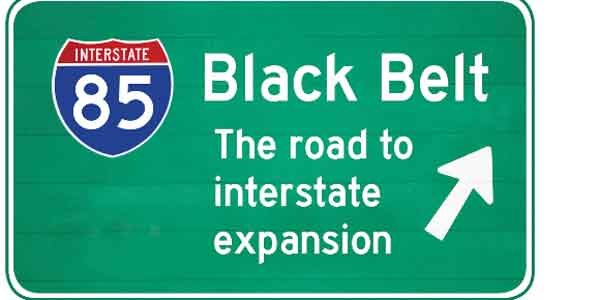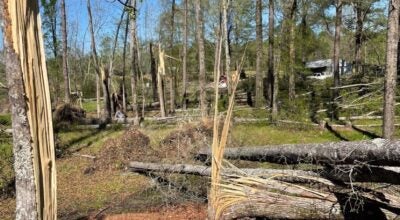Along the route of proposed I-85
Published 11:09 am Sunday, August 22, 2010
Estimates show the proposed extension of Interstate 85 west from Montgomery to the Alabama-Mississippi state line would have a profound effect on the area that it crosses.
The travel advantages are obvious. Rather than cross that part of Alabama on U.S. Highway 80 at 65 miles per hour and slowing to 30 mph while going through towns, getting from Point A to Point B at a consistent 65 or 70 mph will allow travelers to get where they want to go at a quicker pace.
However, progress is not without pain. There are a number of concerns spelled out in the expansion project’s environmental impact study created by Volkert and Associates, the project manager.
The impact study covered 2,433 square miles, predominantly along paths north and south of U.S. Highway 80. It took into account the ecological impact of building the extension through areas with endangered or threatened species, such as the bald eagle in Marengo County or the Alabama sturgeon in Dallas County.
Buddy Covington, environmental department head with Volkert, said the preferred route was determined by taking into account the least amount of negative environmental impact along the course.
“You also have to look at constructability and, if it is constructed in parts, which route would have the most usable segments,” he said.
The preferred route runs south of Selma from Montgomery before it turns north of Uniontown, drops back south of Demopolis and travels west and ends just north of Cuba at Interstate 20/59.
Ed Martin, a public relations representative for the project through Volkert and Associates, said the main planned route was determined following careful study, avoiding as many businesses, homes and farms as possible.
“I would like to see it take more northern route,” said Dr. Ken Tucker, the dean of the University of West Alabama Business College. “There’s a lot of considerations you have to make in a project like this;environmental studies, social and economic impact and many others; but I think a more northern route would provide a greater impact to the cities we care about: Selma, Uniontown, Demopolis and Livingston and York.”
Over the expanse of the highway, engineers found 52 homes and one business that would be affected by this plan.
“It’s going to be a long time before the funding for this project ever gets here, but even then, the owners will be paid fair market value,” Martin said. “This plan has been in the works for almost six years.”
If you build it, they will come
The project’s environmental impact statement also predicts it would bring in 16 percent more people to live in the eight counties affected by the extension by the year 2030 than would come without the extension. The study predicts 75,563 more people would come to live in the counties without the extension but 86,559 with the I-85 extension.
The county most affected in population by the extension would be Dallas County, which would see more than 20 times the population growth with the extension than without. Marengo County, predicted to lose 634 people in 2030 without the extension, would gain 1,330 with the extension, according to the survey.
The study’s employment forecasts are also positive, predicting an increase of 37.4 percent in the number of jobs in 2030 with the I-85 extension, with the greatest increase seen in Autauga County, predicted to add 75 percent more jobs over the year 2000.
Tucker said a population boom would likely provide the most immediate economic impact as the newly-developed highway seeks business and industry tenants.
“You increase your population base all along the highway,” he said. “More people means more tax dollars for the city and county which is put back into roads, parks and improving whatever infrastructure that may exist which, in turn, improves the overall quality of life.”
Martin said that retail and business development would logically follow the people and their shopping dollars.
“Take a look at where interstates have gone, and only a few exceptions have had very little impact, like I-20/59 when it comes into Greene County,” Martin said. “You get over in Meridian, and the mall wasn’t there before. The interstate came through, and guess where the mall is? Right there.”
New developing versus moving development
While much of the proposed impact of an I-85 connection centers on the recruitment of business and households to the new road system, Tucker warned there is potential for what he called “phantom growth.”
“Economic development is only development if it’s new business, recruiting new business and industry and people to the area,” he said. “What you don’t want to happen is for it to cannibalize the businesses already on Highway 80.”
Construction on the highway is not likely to begin before 2015 and could last until 2035 under the most ideal conditions. Tucker’s estimation is that those who are ready to hit the industry recruiting trail may be best served to let the development process work itself out.
“In all reality, the businesses that could potentially relocate to this area aren’t even in existence right now,” he said. “Thirty or 40-plus years is a long time. Just think about the big businesses today. How big were they 30 years ago? Most were just starting out, or they were in an early stage of growth.”







